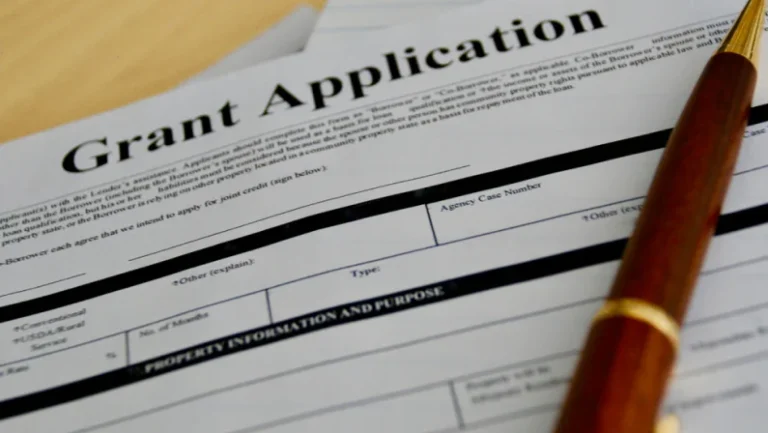Finding your next big opportunity can feel like searching for a needle in a haystack. But that’s where strategic competitive intelligence comes into the picture.
Through gathering and analyzing key data about competitors, industry trends, and customer needs, companies gain valuable insights that guide smart moves into untapped markets.
And with a solid competitive intelligence strategy, businesses can spot gaps, predict shifts, and stay one step ahead, turning market challenges into fresh avenues for growth.
What Is Competitive Intelligence?
Competitive intelligence is the process of gathering, analyzing, and using information about your industry, competitors, and market trends to make informed business decisions. Many companies partner with a trusted competitive intelligence service or a dedicated competitive intelligence company to access accurate data and actionable insights.
Why Is Competitive Intelligence Important for Business Growth?
Staying competitive in today’s market requires more than just keeping an eye on your rivals — it demands deep insights backed by solid data. Effective competitive intelligence research helps companies navigate changing trends and customer demands with confidence.
Here’s why smart businesses rely on competitive business intelligence to fuel their growth:
- It uncovers emerging trends and market shifts, giving you a head start in adapting your offerings.
- It helps you identify strengths and weaknesses in your competition, so you can refine your own strategy.
- It reduces risks by backing your decisions with real-time data instead of guesswork.
How Does Competitive Intelligence Help Identify New Market Opportunities?
Competitive intelligence plays a crucial role in helping businesses discover fresh market potential and stay ahead of the game. Through using proven competitive intelligence techniques, companies can analyze market gaps, customer behavior, and competitor moves to spot where demand is rising or unmet.
Combining these insights with marketing competitive intelligence allows businesses to tailor their products, refine messaging, and confidently enter new markets before the competition catches up.
What Are the Key Sources of Competitive Intelligence?
Gathering reliable information is the backbone of an effective competitive intelligence strategy. Tapping into a variety of sources, companies can build a well-rounded view of their industry and rivals.
Here are some of the most valuable sources to fuel your insights:
Publicly available data
Company websites, annual reports, press releases, and industry news can reveal your competitors’ latest moves and future plans. Keeping tabs on these sources helps you stay updated without needing intrusive tactics.
Customer feedback and reviews
Online reviews, surveys, and social media comments offer real-world insights into what customers love and what they wish they could get. This direct input can highlight gaps in the market that your company can fill.
Market research reports
Industry reports, white papers, and trend analyses provide big-picture data on where the market is headed. Investing in quality research saves time and helps you make strategic decisions with confidence.
Competitor product analysis
Studying your rivals’ product features, pricing, and promotions can reveal their strengths and weaknesses. This allows you to fine-tune your own offerings to stand out and attract new customers.
What Tools and Techniques Are Used to Gather Competitive Intelligence?
Gathering reliable intelligence requires the right mix of tools and methods to turn scattered data into valuable knowledge. Today’s businesses have access to powerful technology and proven tactics to collect, analyze, and organize information about competitors and market trends.
Here are some popular tools and techniques companies use to strengthen their competitive edge:
- Web scraping tools automatically collect public data from competitor websites, product listings, and online news.
- Social listening tools monitor social media channels for customer sentiment and competitor mentions in real time.
- Surveys and feedback forms gather direct insights from customers about their preferences and unmet needs.
- Industry benchmarking reports help compare your company’s performance with others in your sector.
- Competitive analysis software organizes data into clear dashboards and alerts you to changes in competitor strategies.
- SWOT analysis frameworks break down your strengths, weaknesses, opportunities, and threats to support smarter planning.
How Can Businesses Translate Intelligence into Actionable Insights?
Collecting data is only half the battle. The real value comes from turning information into practical steps that drive growth. Understanding the importance of competitive intelligence means using it to shape decisions, refine strategies, and uncover fresh ways to outperform rivals.
Here’s how smart companies put competitive intelligence marketing into action:
Spot new customer segments
Use insights to identify groups that your competitors may have overlooked. Tailor your products and marketing to appeal directly to these untapped audiences.
Refine product development
Analyze competitor strengths and gaps to design better products or services. This focused innovation helps you meet customer demands more effectively than the competition.
Optimize marketing campaigns
Monitor competitor messaging and promotions to craft sharper, more relevant campaigns. This ensures your marketing budget is spent wisely and reaches the right people at the right time.

What Are Common Challenges in Competitive Intelligence?
While competitive intelligence and analysis are vital for business success, gathering and using this information isn’t always straightforward. Companies often face hurdles that can limit the value of their insights or slow down decision-making. Knowing these challenges helps you prepare for them and build a stronger, more efficient strategy.
Information overload
It’s easy to collect too much raw data without clear goals in mind. Filtering out what’s relevant is crucial for effective competitive intelligence and analysis.
Keeping data up to date
Market trends and competitor actions change constantly. Relying on outdated information can lead to poor decisions and missed opportunities.
Ensuring data accuracy
Not all sources are reliable, and using inaccurate data can skew your competitive insights. Verifying information before acting on it is a must.
Cross-team communication gaps
Sometimes, insights aren’t shared across departments quickly enough. Strong communication ensures that everyone benefits from competitive intelligence and analysis.
Who Should Be Involved in Competitive Intelligence Activities?
Successful competitive intelligence depends on collaboration and input from various people within your organization. When everyone contributes their perspective, your company can make better use of the insights you gather.
Here’s who should play a role:
- Marketing teams. They use insights to fine-tune campaigns and positioning.
- Sales teams. They benefit from understanding competitor tactics and customer pain points.
- Product development teams. They use data to design offerings that stand out in the market.
- Executive leadership. They rely on competitive intelligence to guide strategic planning and big-picture decisions.
How Do You Evaluate the Quality and Reliability of Competitive Intelligence Data?
Not all data is created equal, so evaluating its accuracy and credibility is essential for trustworthy insights. Poor-quality information can lead to flawed strategies, wasted resources, and missed opportunities.
Use these key checks to ensure your competitive intelligence and analysis efforts stay on point:
Check the source credibility
Always verify who published the information and their reputation in the industry. Reliable sources boost confidence in the decisions you base on their data.
Cross-reference data points
Compare information from multiple sources to spot inconsistencies or confirm facts. This reduces the risk of acting on errors or misleading details.
Assess the timeliness
Old or outdated data can be just as harmful as inaccurate data. Make sure the insights you use reflect the current market landscape and competitor activities.
How Often Should You Conduct Competitive Intelligence Research?
Competitive intelligence isn’t a one-time task. It’s an ongoing process that keeps your business adaptable in a changing market. Ideally, companies should monitor key competitors and industry trends continuously while doing a more in-depth review quarterly or biannually. Regular updates help you react quickly to new threats or opportunities, ensuring your strategies stay fresh and relevant.

How Can Startups and Small Businesses Leverage Competitive Intelligence?
For startups and small businesses, smart use of competitive intelligence can level the playing field against larger rivals. With limited resources, focusing efforts wisely makes a big difference.
Here’s how smaller teams can get the most out of competitive insights:
Use free and low-cost tools
Leverage social listening tools, Google Alerts, and free industry reports to gather valuable information without straining your budget.
Focus on your local market first
Analyze local competitors and customer needs to find quick wins and build a strong base before expanding further.
Prioritize actionable insights
Don’t get overwhelmed with too much data; focus on information that directly impacts your product, pricing, or marketing strategy.
Build a culture of shared intelligence
Encourage team members to share what they learn about competitors during sales calls or customer interactions, keeping everyone informed.
How Do You Measure the ROI of Competitive Intelligence Efforts?
Measuring the return on investment (ROI) of your competitive intelligence program helps you prove its value and refine your strategy over time. Track metrics like increased sales, shorter sales cycles, successful product launches, or cost savings from avoiding bad decisions.
Combining hard numbers with qualitative feedback from teams shows how your insights directly contribute to smarter moves and better results.
Discover Growth Opportunities with Smart Competitive Intelligence
A well-executed competitive intelligence program curated by experts empowers businesses to spot trends early, outmaneuver rivals, and uncover fresh growth opportunities. Partnering with a trusted business development consultant like LSI can help you build a robust strategy, turn data into action, and confidently make decisions that keep you ahead of the curve.
Ready to sharpen your edge? Connect with LSI today and take your competitive intelligence to the next level!





